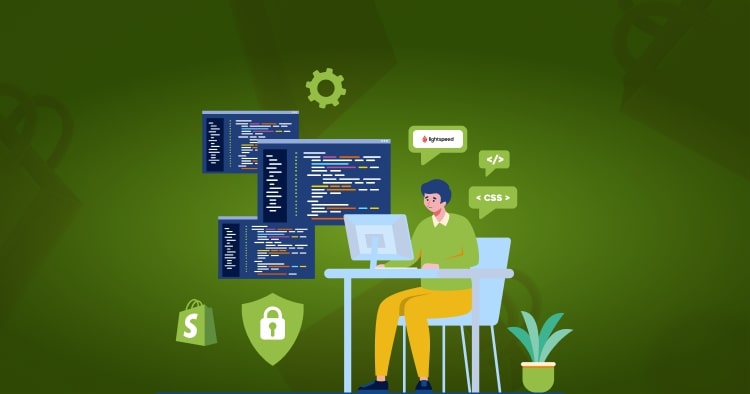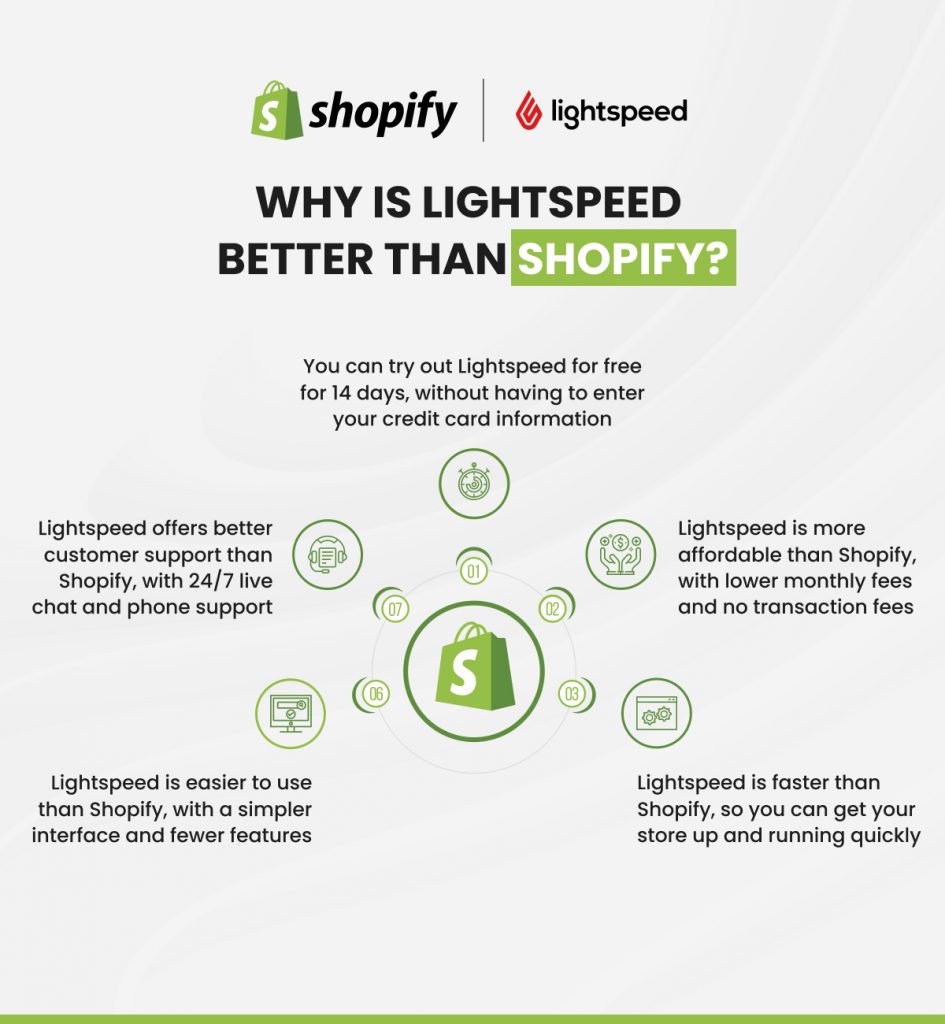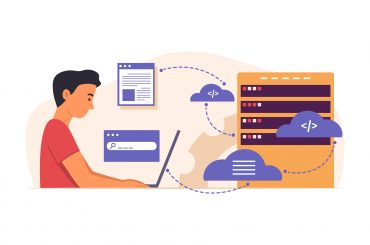How To Migrate Lightspeed To Shopify – A Detailed Guide
Last Updated | January 16, 2024
Table of Contents
An Overview: How To Migrate Lightspeed To Shopify
Are you launching a new eCommerce store, or are you running an eCommerce store on Lightspeed and want to shake things up? If you are nodding, you have to come to the right place. The correct store development solution is important for securing sales and keeping the customers satisfied.
So, if you are ready to ride this path, let’s talk about Lightspeed Shopify migration because Shopify is the best platform for online merchants to maximize their sales and growth prospects. Honestly, there is so much to talk about that it will be a lengthy post. So, just sit back and start reading about Lightspeed Shopify migration!
Lightspeed to Shopify Migration: Lightspeed Vs. Shopify
Lightspeed
Lightspeed is a fully integrated POS solution for restaurants, golf clubs, and retail businesses. It is also the platform of choice for Sony, Goop, and some of the other big brands around the world. Lightspeed offers personalized online store solutions. This platform has been around for over fifteen years and offers an extensive range of features for online retailers, including analytics, inventory management, purchase order management, and payment processing. It can help optimize the in-store and online store management, but POS hardware can be used to handle the payments.
What we like about Lightspeed is that it can support online sales as well as in-store sales, and the inventory management tools are pretty robust. It has a free trial available, and there are loyalty program functions. On the other hand, it can be expensive, and the community isn’t very active either. To summarize, Lightspeed has the following features;
- Inventory
- Analytics and reporting
- Cloud-based system
- Multi-store configuration
- Seamless customer management
- Integrated payment
- Omni-channel foundation
- Support services and onboarding
- Marketing
Shopify
This is an eCommerce household label and hardly needs any introduction. The users will have everything you need to manage and run the online store while keeping an eye on the analytics. There are more than 150 templates available, while a POS app helps keep an eye on the payments. Not to forget, the app store is loaded with a myriad of apps to customize the store. In fact, Shopify has a supportive community so that you can get immediate responses from people.
With Shopify stores, you can get an SSL certificate so that you can be assured about encryption and privacy. In addition, it has a mobile app available for remote store management and can be integrated with various plugins. On the other hand, some templates can be expensive, and you don’t get anything for free other than a free trial. As far as the features are concerned, Shopify has the following features that are worth mentioning;
- Storefront themes
- Shopping cart
- Store management
- SEO features
- Marketing
- Inventory management and product organization
- Web hosting
- Mobile apps
- Round-the-clock support
- Analytics and product reports
- Central dashboard
Connect Lightspeed to Shopify – How To Migrate From Lightspeed To Shopify?
Step By Step Guide to Shopify Developer
If you have decided to migrate your store from Lightspeed to Shopify, there is a formal procedure to follow, and we are sharing the details with you.
Step One
The first step is to export the store information and data from the Lightspeed store. In particular, you have to utilize CSV format, and there are four files that have to be exported. However, before you work on the export, you need to install Lightspeed eCom. Also, keep in mind that data should be exported in one go to ensure the data doesn’t come out mismatched and incomplete. Now, let’s see how you can export the data;
- Sign in to the eCommerce account (Lightspeed)
- When you are signed in, tap on the tools and then exports
- Click on the “add export” button
- Choose all products and tap on the export button
- Now, tap on the download button, and the CSV file will be prepared
- Lastly, just save the CSV file on the computer
Step Two
Once you have exported data from Lightspeed, you have to import it to Shopify. Since these files contain information about different products and their variants, it’s important to include them in import. For this purpose, you can opt for the store importer app to import inventory, customer data, and products, but you won’t be able to import historical orders. Similarly, if you have the POS channel and online channel installed on the Shopify store, the importing will be available on both channels. For importing the data, you can follow the instructions mentioned below;
- Open the Shopify admin, tap on the apps, and move to store importer
- Tap on Lightspeed and click on the “add file’ option
- Choose your files and put them in the “add file” area (it’s a drag-and-drop feature)
- Now, click on the continue import button and click on the import button
When it comes down to importing the data, we want to add that some information won’t be imported to Shopify because the data model doesn’t support them. Some of these data elements include MSRP, UPC, EAN, department, season, supplier/vendor, tax class, size unit, volume, stock alert, and custom fields. In addition, when it comes down to customer information, DOB, customer type, created at, website, discount, contact numbers, and website isn’t imported.
When it comes down to Lightspeed, it allows the store owners to create custom fields for customer profiles, but Shopify doesn’t support them. So, if you want to store the data in the Shopify store, you will need the loyalty app to support the custom fields.
Step Three
With this step, you have to review the imported data and update it. However, once the import is complete and something is left behind, you can add that data manually. As far as the prices are concerned, the currency will be determined by the store currency (yes, Shopify’s). For this purpose, you need to open the admin and review the data to make sure everything has been imported completely. In case of missing data, you can add the missing customers and products manually. Once the data import is complete, you can just manage your business on Shopify. However, if this is something that’s complicated for you, you can hire Shopify expert or Shopify migration services.
What Should You Know When Migrating Lightspeed To Shopify?
When you want to migrate from Lightspeed to Shopify, there are some important factors to consider or things that need to be done, such as;
- Improve The CX
There are chances that you might have to remove some protocols to ensure the Shopify store operates appropriately. In addition, you need to ensure that images, theme styles, and style sheets are easy to access. In case you skip this step, the store management might become challenging, and store experience will be diminished. So, remove the protocols.
- Data Import
When you are working on Lightspeed to Shopify migration, it is essential to move data to the Shopify store as soon as you can. This is because it will help with quick store launches. Similarly, you have to ensure careful data organization and move them. You can also use third-party apps to enhance the overall process. In case you Shopify Plus, you can opt for the importer app or simply opt for Shopify design company to handle things for you.
- Engagement
The migration needs to be efficient because various comprehensive features and tools are available to create a good customer experience. This is important for capturing the customers and retaining them.
- Signing Up
It’s evident that shifting to Shopify will help achieve the eCommerce goals. So, while signing up for Shopify, make sure that you choose the right plan because it will directly influence which features you have access to. Also, if you would like to customize the Shopify store, you need a different plan for that.
How Is The Shopify Inventory System Different From Shopify?
When it comes down to the Shopify inventory system, it is the automated digital tool that can help assist with inventory tracking. There are two types of inventory systems available, including automated and manual inventory systems. However, with the app, Shopify store owners will be able to streamline inventory management and automate it. In addition, you will be able to forecast the purchasing trends and reallocate resources.
Believe it or not, it will enhance the employee’s accuracy and productivity since they won’t have to spend hours tracking and counting the inventory. So, if you keep running out of stock or have to spend too much time managing the inventory, it’s suggested to opt for the Shopify inventory system. Some of the features entailed by the Shopify inventory system include;
- It has in-depth inventory tracking features, so you can track the orders, input the order fulfillment details, and get alerts on purchasing the products.
- Also, it can be integrated with other Shopify apps to streamline store management.
- It can help make sales forecasting and automate the generation of purchase orders.
- It can be connected with the POS app to ensure real-time syncing of stock levels and orders.
- Moreover, it provides in-depth inventory analysis and reports so that you can make appropriate changes.
This is all you need to know about the Shopify inventory system, and you can also hire Shopify development services to fix it. On the other, Shopify is an eCommerce platform where you can create and manage an online store. That being said, the Shopify inventory system is a part of Shopify.
What Are Lightspeed To Shopify Migration Benefits?
When it comes down to Lightspeed to Shopify migration, it surely helps streamline the store’s inventory management and fulfillment operations. To begin with, this is an easy-to-setup configuration and offers various features that will help track and manage the inventory. For instance, it can help with demand prediction, analytics report development, reordering alerts, real-time product, and inventory tracking, and much more.
For the most part, people opt for Shopify because it’s comfortable and convenient to work with (it’s all just a matter of few clicks). There are multiple integrations and extensions available to customize the Shopify store. In the section below, we are sharing a few more benefits of this migration, such as;
-
Seamless Maintenance Of Inventory Levels
The eCommerce store owners have to maintain sufficient stock levels to ensure the customers’ demands are being fulfilled. In addition, it helps optimize the shipping costs. Honestly, it’s challenging to forecast the product demands if you don’t have access to data and the right tools on hand. With this migration, you will have access to the order information, which streamlines the inventory predictions. In addition, it helps understand the reordering quantities, promising better insights.
-
Reduction In Inventory Costs
Storing the inventory isn’t only challenging, but it’s expensive as well. However, Shopify can help track the product SKUs and understand the right safety stock without going overboard with the storage costs. Overall, it helps manage the inventory levels and keep an eye on them for accurate taxes.
-
Improved Inventory Tracking
Shopify has various features and apps that can help with inventory tracking so that you can work on the logistics costs. It’s actually great for growing Shopify stores as it helps throughout the retail supply chain. In addition, it will provide quick order fulfillment without compromising on efficiency and accuracy. Not to forget, it will eventually improve the inventory performance.
On top of everything, there are inventory reporting tools, so you will have access to insightful data to make effective inventory decisions (yes, it even helps with inventory allocation). In simpler words, you will be able to take the data-driven approach to ensure proper storage, quick deliveries, and cost-efficient shipping.
-
Higher Accuracy Rate
Lack of stock control is the biggest enemy of an online store, but this migration to the Shopify store will help achieve the optimal accuracy rate. This is because Shopify can help with efficient order fulfillment that boosts customer satisfaction. We do want to add that yielding all these benefits might require some additional apps and integrations, and Shopify integration services can help.
Can Folio3 Help Import Data To Shopify From Lightspeed?
Folio3 is a well-known company offering digital strategy consultation and transformation services. That being said, they have curated the Shopify services with which they provide integration services. Some of their services include Shopify integration with QuickBooks and Shopify to eBay integration. Similarly, they can help with data import to Shopify from your Lightspeed store. This is because they have various integration and importing services to streamline data transfer.
What Is The Folio3 Lightspeed To Shopify Migration Cost US?
Folio3 has various plans available to meet your requirements without costing a fortune. It’s safe to say that Folio3 has effective yet cost-efficient migration services available. The cost will vary with the product volume, amount of data to be imported, and customization needed for the Shopify store. So, it’s best to call Folio3’s customer support and get an appointment for an accurate quote.
Can You Use Excelify To Migrate Data From Lightspeed Shopify?
Excelify, known as Matrixify (yes, they changed the name). It can be used for bulk data import and export with the use of CSV and Excel files. As far as Lightspeed is concerned, it can be used to migrate data to Shopify. In addition to Lightspeed, it can also migrate data from Magento, WooCommerce, WordPress, and BigCommerce. The best thing about this app is that it promises bulk data updates without changing the data and details. Some additional features of this app include;
- Image updates
- Image imports
- Product pricing updates
- Location-based inventory updates
- Product variant updating
- Updates the SEO information
- Supports bulk customer activation
- Per-product cost updates
- Import and export of shop comments, blog posts, and blogs
Data that can be migrated from Lightspeed to Shopify?
- Products – it includes quantity, variants, price, stock status, manufacturer, SKU, and other descriptions.
- Manufacturer name
- Product categories including descriptions and names
- Customers – it includes their name, billing address, and shipping address.
- Orders – it includes order products, status, date, prices, discounts, taxes, shipping address, order comments, and customer’s billing address and email address.
- Reviews – it includes review date, rating, title, user’s name, and comments.
Move Lightspeed to Shopify – Wrapping It Up
Shopify is a popular name in the eCommerce world and can really revolutionize store management. So, migrating from Lightspeed is a reliable option since Shopify is convenient, efficient, powerful, intuitive, and much more. So, get in touch with Folio3 because they are best at handling the migration process.
FAQs About How To Migrate Lightspeed To Shopify
Can I Migrate Lightspeed Orders To Shopify?
Yes, you can migrate orders from Lightspeed to Shopify, especially if you use Lightspeed eCommerce or retail. However, you might have to install the eCommerce store, export the data, and import it to Shopify through an importer app.
Is Folio3 Lightspeed To Shopify Migration Service Available In UK, Australia, and Canada?
Yes, Folio3 migration services are available in the UK, Australia, and Canada. In fact, Folio3 has offices available in these countries, so you can discuss details in person!











